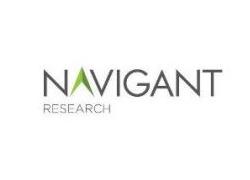Automated vehicles are quickly nearing a level of maturity, says Navigant Research

A new Leaderboard report from Navigant Research examines the strategy and execution of 18 companies developing automated driving systems.
Automated driving is a key technology for improving the commuting experience while also addressing the societal problems caused by the saturation of automobiles, including traffic congestion, injuries and fatalities, as well as diminished air quality.
Advances in computational architectures and sensing technology are driving the market forward, and when coupled with dramatic cost reductions, vehicle electrification, and ubiquitous connectivity, highly automated vehicles are quickly nearing a level of maturity that will enable initial deployments for consumers.
“Tremendous progress has been made in just the last few years on the development of automated driving systems. However, as we get closer to deploying high-level automated driving, everyone involved must now address the remaining questions that are in many ways more difficult to answer than developing the foundational technologies,” says Sam Abuelsamid, senior research analyst at Navigant Research.
“The companies that have the resources and expertise to ensure that the automation technologies are robust enough to operate in a broad range of conditions while also supporting business models that bring access to the masses are the most likely to succeed.”
Stakeholders competing in this space include OEMs, suppliers, non-automotive technology companies, and startups. According to the report, companies that control the entire automated driving stack, including hardware, software, and services, will have a significant advantage as the automated driving market matures.
Additionally, market players with existing vehicle manufacturing capabilities or partnerships with manufacturers are expected to have an edge on the competition.
The report, Navigant Research Leaderboard Report: Automated Driving, examines 18 leading companies developing automated driving systems and rates them on 10 criteria: vision; go-to market strategy; partners; production strategy; technology; sales, marketing, and distribution; product capability; product quality and reliability; product portfolio; and staying power.
Using Navigant Research’s proprietary Leaderboard methodology, companies are profiled, rated, and ranked with the goal of providing an objective assessment of their relative strengths and weaknesses in the global market for automated driving systems.
An Executive Summary of the report is available for free download on the Navigant Research website.
Comment on this article below or via Twitter @IoTGN
